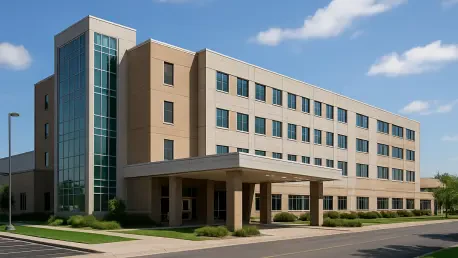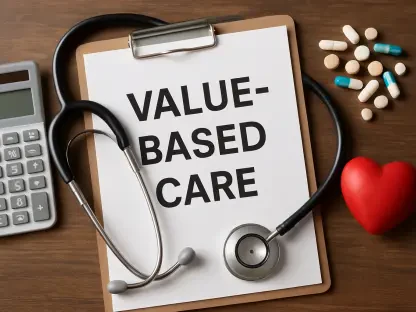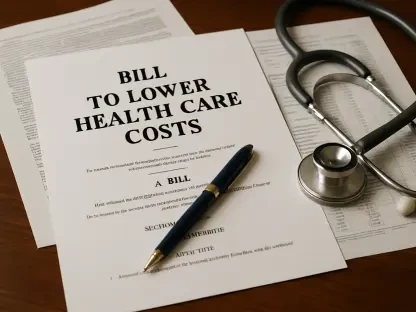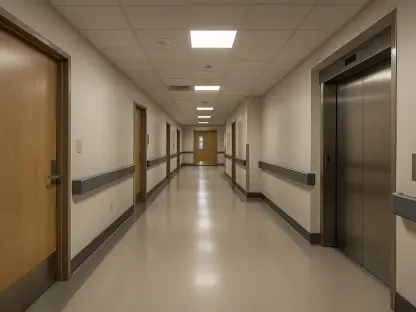In the quiet towns of rural Kansas, a deeply unsettling pattern has taken root, where hospitals are increasingly turning to lawsuits against patients for unpaid medical bills, some as low as $104, leaving families grappling with both financial hardship and emotional distress. This growing practice has cast a shadow over communities, spotlighting the personal struggles of individuals like Sarrah and Kyle Miller from Medicine Lodge, who found themselves sued by Medicine Lodge Memorial Hospital over a mere $230 bill. Such stories are not anomalies but part of a broader wave, with thousands of legal actions filed by Kansas hospitals in recent years, often targeting small debts that nonetheless carry heavy consequences. For many residents, the arrival of a court summons is a harsh blow, piling on fees and the threat of wage garnishment to already strained budgets, while the fear of mounting costs leads some to delay essential care, risking worse health outcomes. This troubling intersection of healthcare and legal systems reveals a stark reality: rural hospitals, desperate to stay afloat, are resorting to aggressive measures that profoundly affect the very people they serve. The ripple effects extend beyond individual households, raising critical questions about systemic failures, ethical boundaries, and the sustainability of healthcare in underserved areas.
Financial Struggles of Rural Hospitals
Closure Risks and Operating Losses
Rural hospitals in Kansas are teetering on the edge of financial collapse, with a staggering 67% at risk of closure, placing them among the most vulnerable in the nation. Many of these facilities, including Newman Regional Health in Emporia, consistently report negative operating margins, meaning that even small unpaid bills can exacerbate their precarious situation. The threat of closure is not merely a statistic but a looming crisis for communities that rely on these hospitals for essential care. When every dollar counts, the decision to pursue legal action against patients, even for minimal amounts, becomes a necessary, albeit harsh, strategy to offset losses. Data from healthcare quality organizations underscore the severity, noting that a significant portion of these hospitals could shutter immediately without drastic measures. This financial desperation drives a cycle where hospitals must prioritize revenue recovery over patient leniency, often at the cost of community trust and goodwill, highlighting the dire stakes for rural healthcare providers struggling to keep their doors open.
Beyond the immediate risk of closure, the chronic operating losses faced by rural Kansas hospitals paint a grim picture of sustainability. These facilities often serve smaller populations, resulting in lower patient volumes that fail to generate sufficient revenue to cover costs. Unlike urban counterparts, rural hospitals lack the buffer of diverse income streams or high-volume services to absorb deficits. The persistent negative margins, sometimes as low as -2% as seen in some reports, force administrators to make tough choices, including pursuing every unpaid bill through legal channels. This approach, while financially pragmatic, risks alienating the very communities these hospitals aim to serve, creating a tension between survival and social responsibility. The broader implication is clear: without systemic intervention or increased funding, the wave of closures could leave entire regions without access to critical medical services, amplifying health disparities in already underserved areas.
Reimbursement Challenges
A significant factor deepening the financial woes of rural Kansas hospitals is the heavy reliance on Medicare and Medicaid patients, whose reimbursements fall far short of covering actual costs. These programs, vital for many low-income and elderly residents, often pay just 65 to 80 cents for every dollar of care provided, creating a substantial gap compared to private insurance rates. In rural settings, where a higher proportion of patients depend on these government-funded plans, the cumulative effect of underpayment is devastating. Hospitals are left scrambling to bridge this shortfall, and pursuing small medical debts through lawsuits becomes a critical, if controversial, means of financial survival. This reimbursement disparity, coupled with the inability to negotiate higher rates due to lower patient volumes, places rural facilities in a uniquely vulnerable position, distinct from urban centers with more diverse payer mixes.
Adding to the complexity, rural hospitals face structural challenges that compound the reimbursement issue, such as limited bargaining power with insurance providers. Unlike larger urban systems that can leverage scale to secure better payment terms, smaller facilities in Kansas often accept whatever rates are offered, further straining their budgets. The result is a vicious cycle: inadequate reimbursements lead to tighter margins, which in turn push hospitals to aggressively collect on even minor unpaid bills to avoid deeper losses. This financial pressure not only jeopardizes the hospitals’ ability to invest in staff or equipment but also erodes patient trust, as legal actions over small sums cast healthcare providers in an adversarial light. The struggle to balance fiscal health with community service underscores a critical flaw in the current healthcare financing model, one that disproportionately burdens rural providers and their patients.
Systemic Issues and Policy Gaps
Communication Failures on Charity Care
One of the most glaring issues fueling the surge of lawsuits over small medical bills in Kansas is the inadequate communication surrounding charity care programs, which could offer relief to struggling patients. Federal regulations, including IRS mandates, require hospitals to inform individuals about eligibility for free or discounted care, yet many patients remain unaware of these options until it’s too late. This gap in outreach often results in preventable legal actions, as families like the Millers face court summons for bills that might have been waived or reduced through charity care applications. Legal experts point to a systemic “don’t ask, don’t tell” dynamic, where neither hospital staff nor billing statements consistently provide clear, accessible information about assistance programs. The consequence is a missed opportunity to resolve debts outside the courtroom, leaving patients blindsided by lawsuits and hospitals reliant on legal measures to recover funds, further straining community relationships.
The disparity in how hospitals approach charity care adds another layer of frustration to this issue. Data reveals significant variation in the commitment to such programs, with some facilities allocating less than 0.2% of operating expenses to charity care, while others dedicate more substantial resources. In rural Kansas, where staffing shortages often limit personalized patient engagement, the burden of navigating these programs falls heavily on individuals who may already be overwhelmed by medical and financial stress. Critics argue that hospitals could avoid many lawsuits by proactively educating patients about available aid during billing or treatment processes, rather than defaulting to legal action when payments lag. This communication breakdown not only exacerbates patient hardship but also highlights a broader failure to align healthcare practices with community needs, perpetuating a cycle of debt and distrust that could be mitigated with better outreach and transparency.
Broader Healthcare Challenges
At the heart of the crisis in Kansas lies a web of systemic healthcare challenges that intensify the burden on both hospitals and patients, particularly in rural areas. The state’s decision not to expand Medicaid has left a significant portion of residents uninsured or underinsured, increasing the likelihood of unpaid bills and subsequent lawsuits. Rural hospitals, already grappling with thinner operating margins than urban counterparts, face additional strain from staffing shortages that hinder their ability to provide personalized financial counseling or negotiate payment plans. Moreover, looming federal funding cuts, projected to cost the state billions over the next decade, threaten to further destabilize an already fragile system. This combination of policy gaps and resource limitations creates an environment where legal action over small debts becomes a default response, rather than a last resort, trapping both providers and patients in a dysfunctional healthcare financing framework.
The fallout from rural hospital closures adds a devastating dimension to these systemic issues, as remaining facilities struggle to absorb increased demand while patients face longer travel distances for care. Journeys of 20 to 40 miles for medical services are not uncommon following a closure, raising costs and delaying treatment, which can lead to worse health outcomes, particularly in emergencies like overdoses or suicides. Studies correlate these closures with higher premature death rates, underscoring the life-and-death stakes of maintaining local healthcare access. For surviving hospitals, the pressure to remain financially viable often translates into aggressive debt collection practices, even for minimal amounts, as they attempt to offset the economic fallout of reduced community access. This vicious cycle, compounded by broader policy failures, demands urgent attention to prevent further erosion of rural healthcare infrastructure and to protect vulnerable populations from the compounding burdens of medical debt and limited care options.
Ethical and Policy Dilemmas
The clash between financial necessity and patient welfare presents a profound ethical dilemma for Kansas hospitals engaged in lawsuits over small medical bills. On one side, administrators argue that pursuing unpaid debts, even as low as a few hundred dollars, is essential to prevent service cuts or outright closures that would devastate rural communities. On the other side, patient advocates contend that medical debt is fundamentally different from other financial obligations, as it often stems from unavoidable health crises rather than personal choice. Legal actions in such cases can deter individuals from seeking necessary care, perpetuating a cycle of declining health and escalating costs. This moral tension underscores a critical question: how can hospitals balance their fiscal responsibilities with the imperative to support the well-being of the communities they serve, especially when systemic constraints offer little room for compromise?
Looking ahead, potential policy solutions offer a glimmer of hope amid these challenges, though implementation remains uncertain. Proposals such as protecting medical debt from credit reporting or barring wage garnishment could alleviate some of the burdens on patients, while increased federal funding for rural health—currently under discussion for Kansas to the tune of $1 billion—might provide hospitals with a financial lifeline. However, without addressing root causes like Medicaid expansion or reimbursement disparities, these measures risk being mere stopgaps. The ethical debate also calls for a reevaluation of how hospitals communicate and apply charity care, ensuring that legal action is truly a last resort rather than a routine response. As this issue unfolds, it becomes evident that resolving these dilemmas requires collaborative efforts from policymakers, healthcare providers, and community advocates to forge a path that prioritizes both sustainability and compassion in equal measure.









